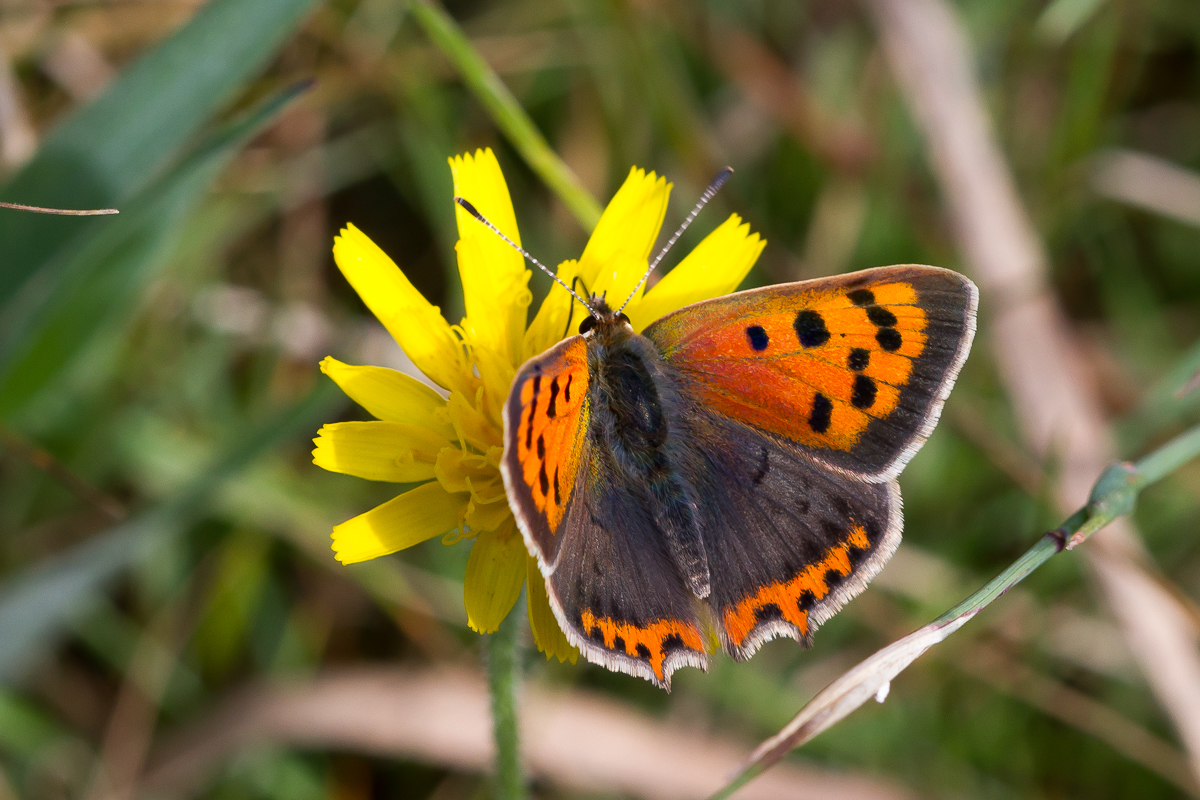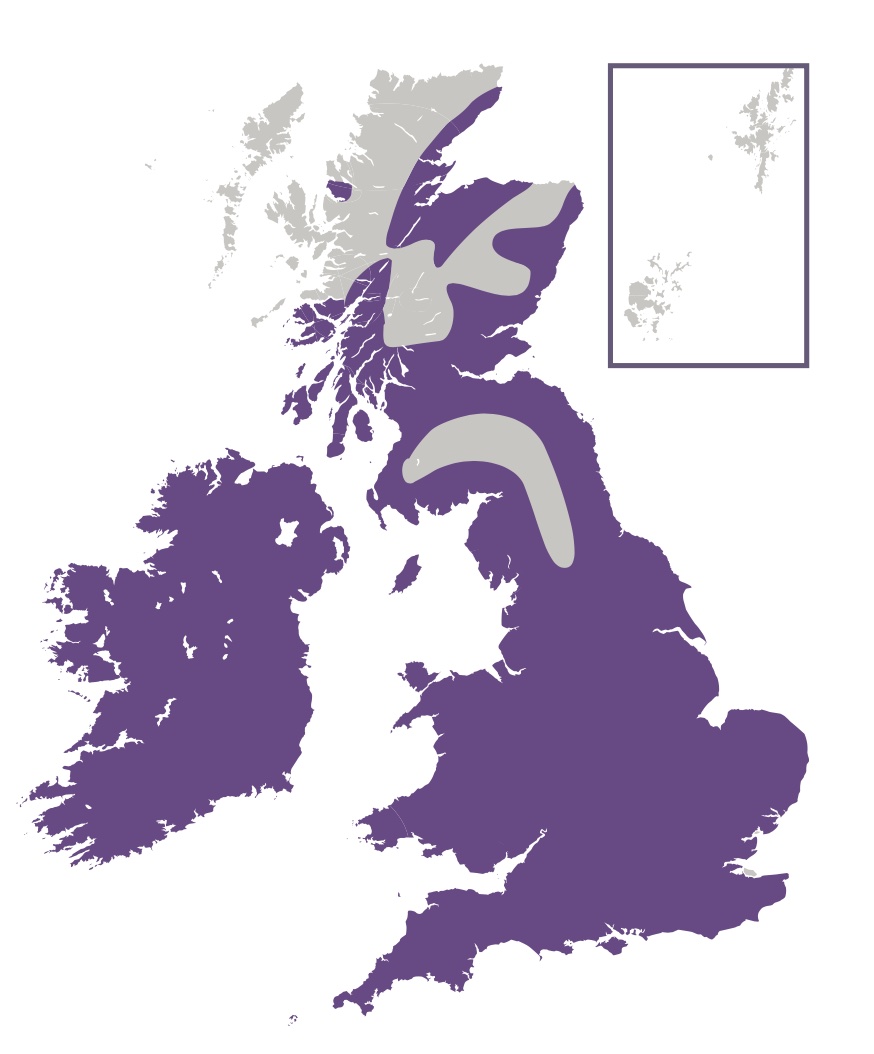
Photo © Peter Eeles
The Small Copper is a fast flying butterfly that, once settled, is unmistakable with its bright copper-coloured forewings. It is a widespread species and a familiar and welcome sight for many naturalists throughout the summer months. This butterfly occurs in discrete colonies throughout Britain and Ireland, but is absent from mountainous areas and far north-west Scotland, the Outer Hebrides and Shetland. Most colonies are fairly small, with just a few adults being seen on the wing at any one time.
This sun-loving butterfly is often found resting on the ground, vegetation or flowers, as it absorbs the sun's rays. Males establish small territories and fly up to intercept any passing insect in the hope of intercepting a passing female. When egg-laying, females are easy to distinguish from males, as they fly low across the ground searching for suitable foodplants on which to lay. Both sexes roost head down on grass stems.

This butterfly favours open land where nectar sources and foodplant are found. Such habitats include grassland, wasteland, heathland, old quarries, embankments, road verges and woodland rides.
Adults feed primarily on Common Fleabane (Pulicaria dysenterica). buttercups (Ranunculus spp.), Daisy (Bellis perennis), dandelions (Taraxacum spp.), hawkweeds (Hieracium spp.), heathers (Calluna and Erica spp.), ragworts (Jacobaea spp.), Red Clover (Trifolium pratense), thistles (Carduus spp. and Cirsium spp.) and Yarrow (Achillea millefolium) are also used.
The primary larval foodplants are Common Sorrel (Rumex acetosa) and Sheep's Sorrel (Rumex acetosella). Broad-leaved Dock (Rumex obtusifolius) is also used.
